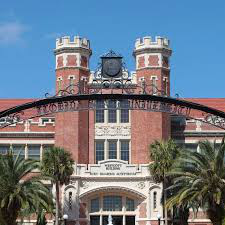Speaker
Description
The Jefferson Lab Eta Factory (JEF) experiment is an upcoming experiment designed to run in Hall D at Jefferson Lab using an upgraded GlueX spectrometer to study various decays of the $\eta$ meson. The GlueX spectrometer consists of a $\sim$2 Tesla solenoid magnet housing a liquid hydrogen target and drift chambers used for tracking charged particles and an array of lead glass blocks (the Forward Calorimeter (FCAL)) downstream of the magnet for detecting neutral particles. The decays of the $\eta$ meson can be used to measure the light quark mass ratio via the $\eta\to\pi^+\pi^-\pi^0$ channel and allow access to higher-order terms in Chiral Perturbation Theory via the $\eta\to\pi^0\gamma\gamma$ channel. The decays can also be used to constrain new charge-conjugation violating/parity conserving (CVPC) reactions and to search for signatures of dark matter. In particular, the $\eta\to\pi^0\gamma\gamma$ channel can be used to search for lepto-phobic dark vector ($B$) bosons in the reaction $\eta\to B\gamma$ ($B\to\pi^0\gamma)$ or dark scalar ($S$) bosons in the reaction $\eta\to\pi^0S$ ($S\to\gamma\gamma$). Studying the rare radiative decay channel $\eta\to\pi^0\gamma\gamma$ requires
replacing the $4\times4\times45$ cm$^3$ lead glass blocks in the inner region of the FCAL with $2\times2\times20$ cm$^3$ lead tungstate crystals, which will provide twice better position and energy resolution. This talk will describe the JEF physics program and the upgrade to the FCAL.
This material is based upon work supported by the U.S. Department of Energy, Office of Science, Office of Nuclear Physics under contract DE-AC05-06OR23177.
| speaker affiliation | Jefferson Lab |
|---|

